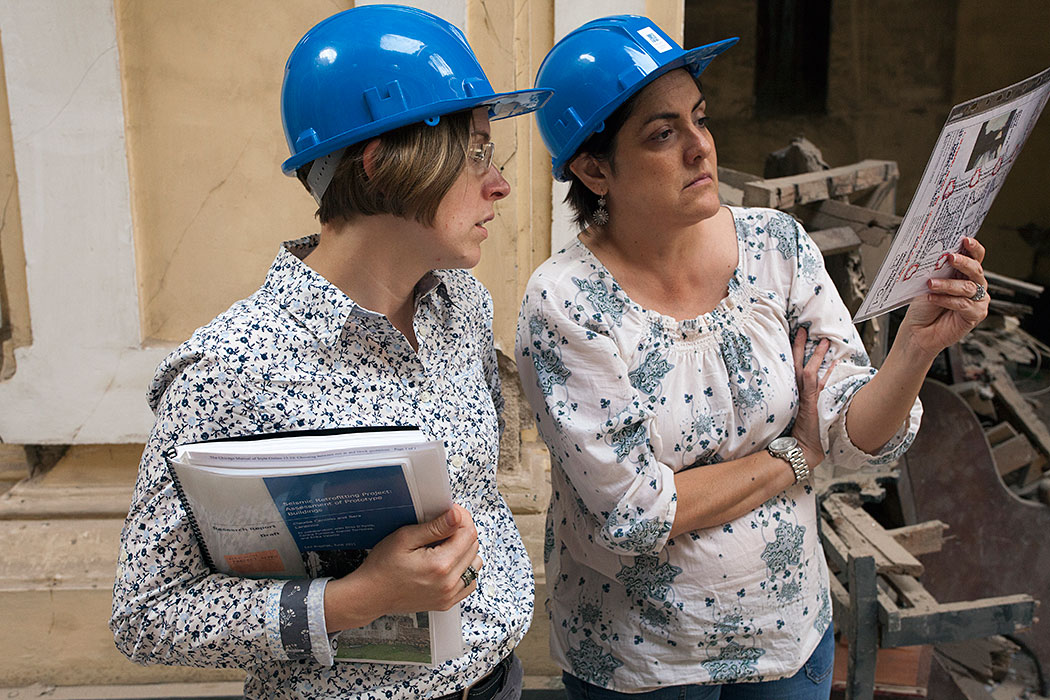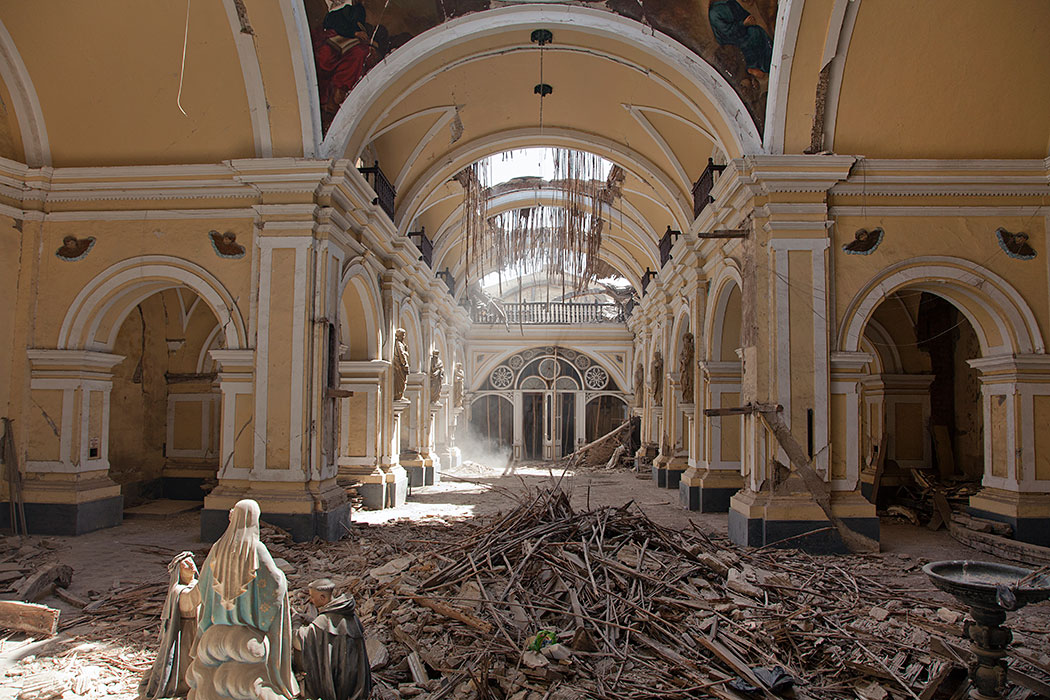Feasibility and Construction Assessment
The first phase of the Seismic Retrofitting Project (SRP) included evaluating the project’s feasibility, goals, and outcomes by consulting with experts in conservation and seismic retrofitting at both the national and international level and establishing an external peer review group.
In collaboration with the Ministerio de Cultura del Perú, the University College London, and the Pontificia Universidad Católica del Perú, SRP identified and conducted structural assessment of four distinct building typologies. These structures were recognized as priorities for the application of seismic retrofitting based on their level of significance, vulnerability, and the applicability of retrofitting techniques across similar building types, particularly in Peru and Latin America.
SRP also gathered information on the modes of failures common to the four building typologies. The project analyzed historic data which recorded the way earthen buildings behave during a seismic event, using findings from the damage assessments performed after the 2007 Pisco, Peru, earthquake, as well as from the 1994 Northridge, California, earthquake (conducted as part of GSAP).
The four prototype structures selected to be studied as part of SRP—the Hotel El Comercio, the Cathedral of Ica, the Church of Kuño Tambo, and Casa Arones—grew out of the post-earthquake assessment process and was informed by the wider regional survey.
2007 Pisco Earthquake
Post-earthquake assessments offer an opportunity to understand why buildings fail and provide information for the improvement of seismic performance. Lessons learned from earthquakes and other natural disasters have been used for centuries to advance construction techniques. More recently, such lessons have fostered the development of the engineering and historic preservation disciplines, as well as the testing and review of current building codes and disaster management policies and procedures.
The history of Peruvian architecture exemplifies this development process. In response to their understanding about the effects of seismic activity on earthen structures, early Peruvian cultures developed reinforcement techniques to enhance construction systems. That tradition continues with the inclusion of the NTE-80 Norma Técnica del Adobe, which regulates new adobe construction in the country and is part of the Peruvian National Building Code.
On August 15, 2007, a Moment Magnitude (Mw) 8.0 and a maximum local Modified Mercalli Intensity (MMI) VII-VIII earthquake hit the southern coast of Peru. Preliminary reports indicated that a large number of historic earthen sites located in the communities of Cañete, Chincha, Pisco, Ica, and Huancavelica were severely damaged.
After the 2007 earthquake, a multidisciplinary team of national and international earthquake engineers, preservation architects, and conservators—convened by the GCI—visited a total of fifteen historic earthen sites, rapidly documented them and evaluated the damage to these sites.
The team concentrated on recording existing conditions such as abandonment, deterioration, or structural alterations over time with the ultimate objective of understanding the impact of such conditions on the building’s seismic performance. The assessment was organized in response to a request from the Instituto Nacional de Cultura del Perú (now Ministerio de Cultura del Perú).
Page updated: August 2014


